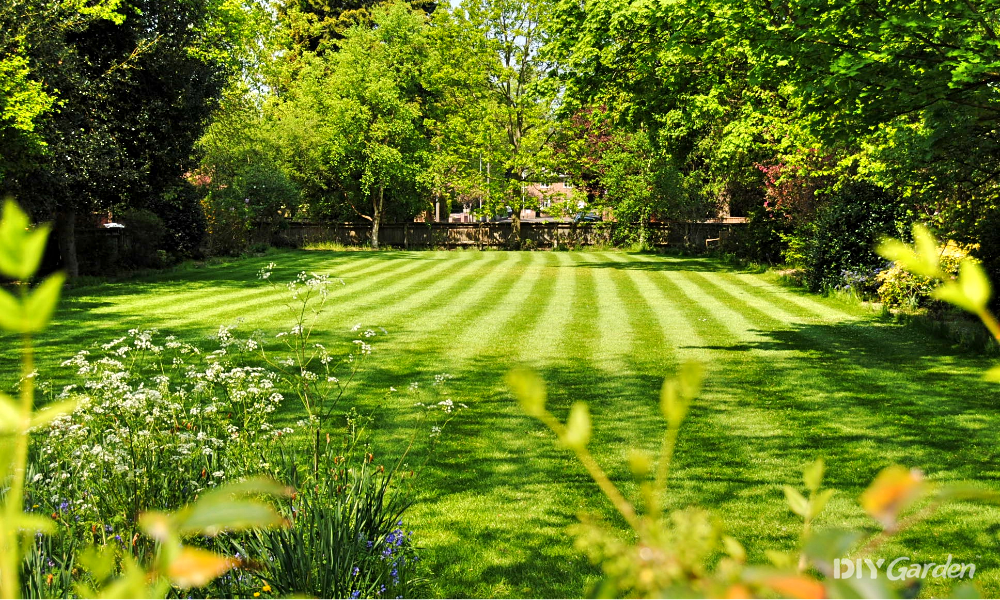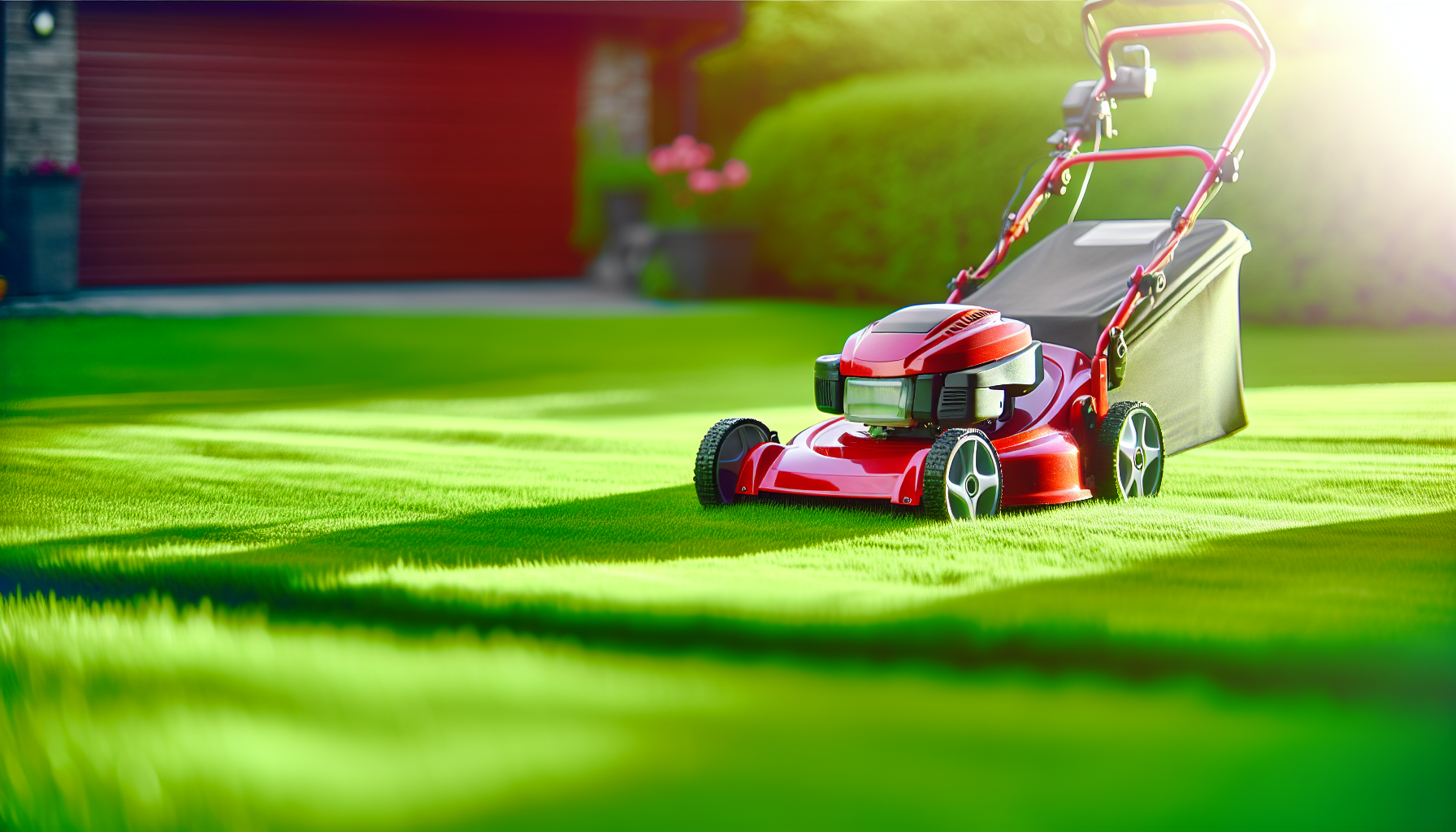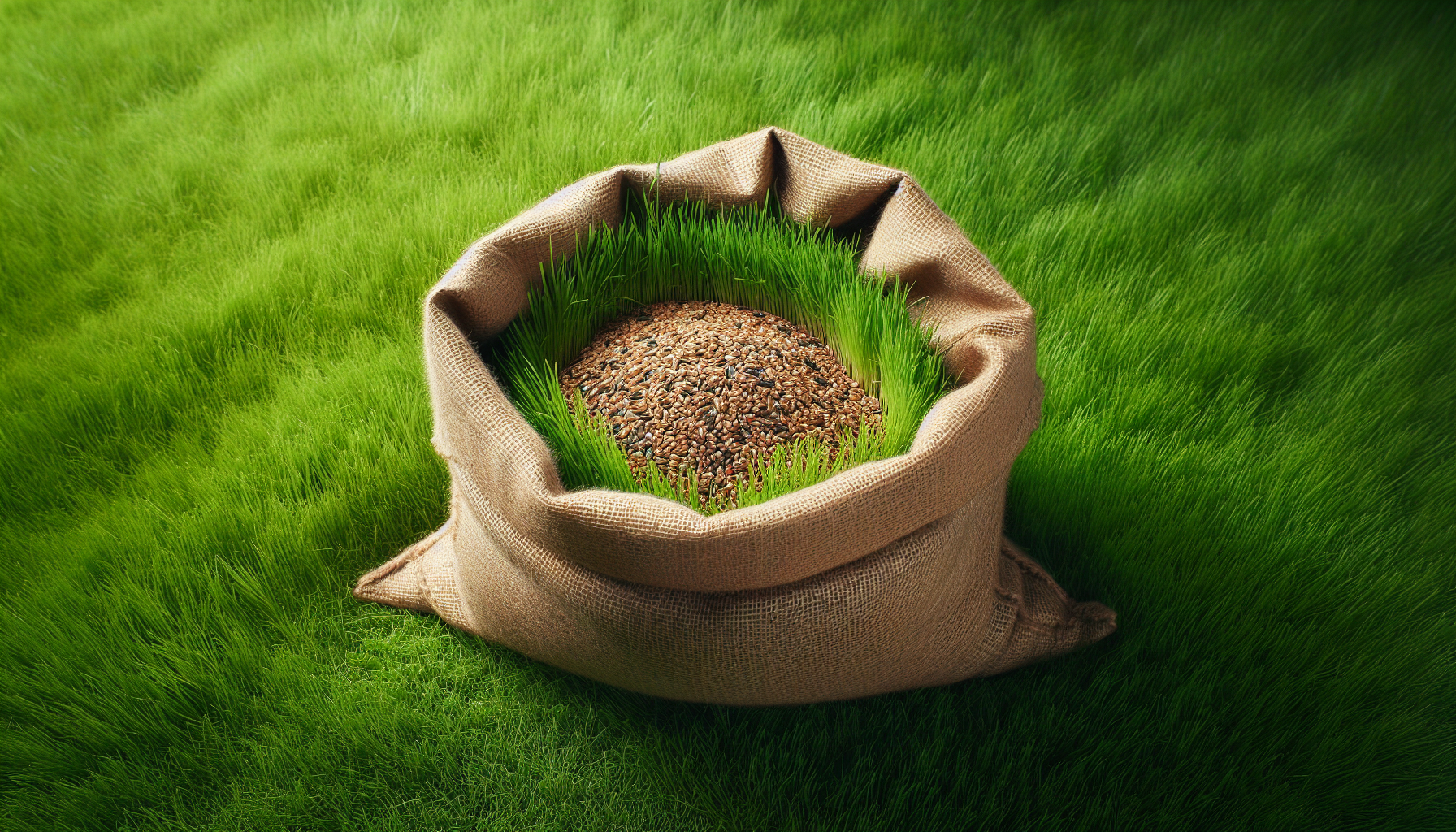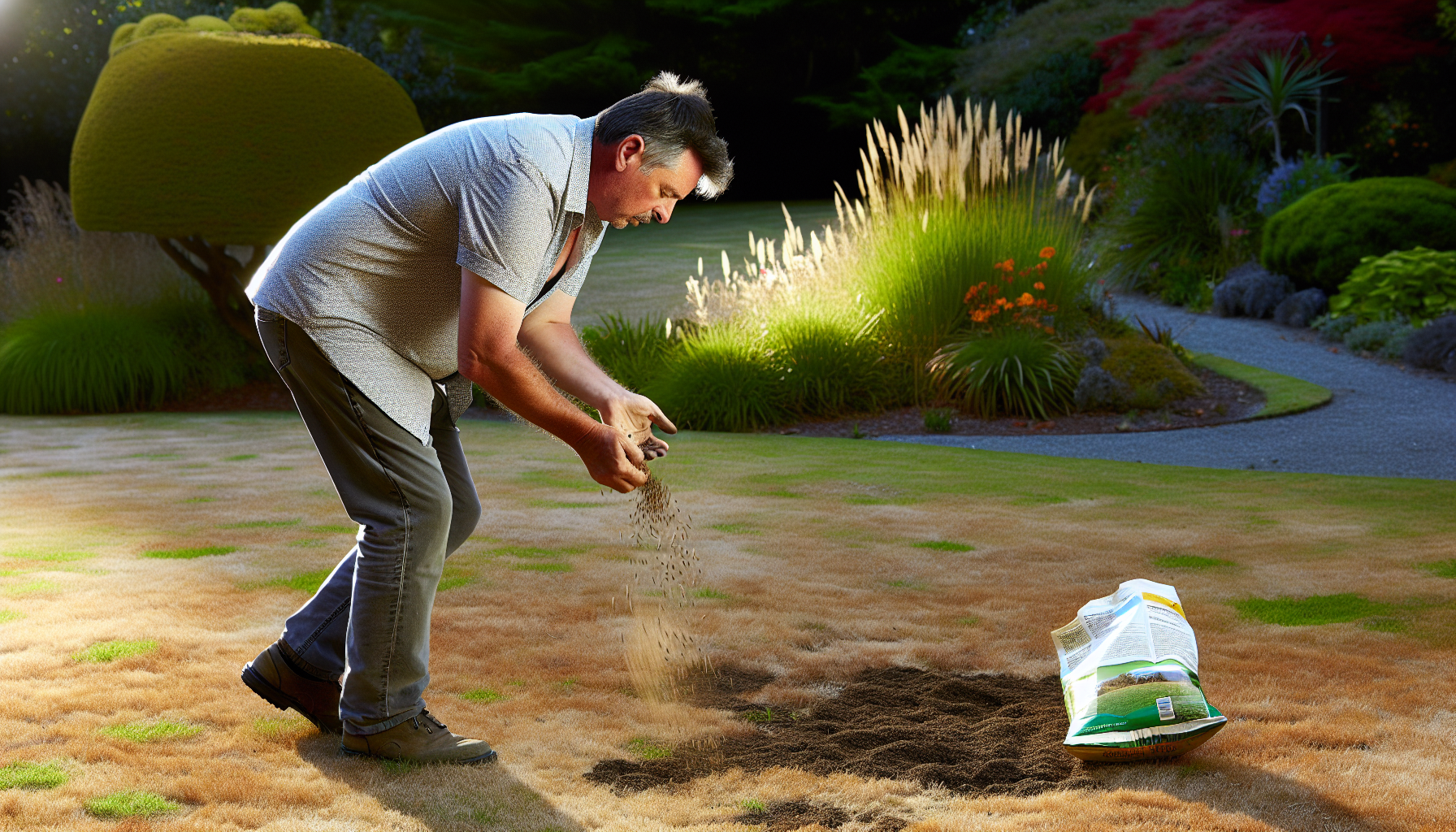
1. Mastering Mowing: The Foundation of Lawn Care
Like a well-trimmed beard or a freshly cut hairstyle, a neatly mowed lawn exudes a sense of order and care. Mowing is the foundation of lawn care, an essential practice that promotes healthy growth and keeps weeds at bay. But mowing isn’t simply about keeping your grass short; it’s about maintaining the optimal conditions for your lawn to flourish.
Let’s uncover the methods to achieve this.
Choosing the Right Mower Blades
Just as a chef chooses the right knife for the job, so too must you select the suitable mower blades for your lawn. Sharp blades lead to clean, precise cuts, essential for maintaining a healthy lawn. There are several types of mower blades, including:
- Gator blades
- Mulching blades
- Low-lift mower blades
- High-lift mower blades
The choice of blade depends on your specific lawn conditions and the type of grass you’re dealing with.
Setting Your Mower Height
Think of your lawn as a community of grass plants. The height at which you mow your lawn can significantly influence these plants’ health and growth. The general guideline is to mow ornamental lawns with no rye grass to 3/8” to 3/4” inch or 1 to 2 cms, and low use lawns with or without rye grass to 3/4” to 1½ inches.
Adjusting your lawn mower height according to the season and grass type ensures your lawn’s optimal growth and health.
Mowing Frequency Insights
Determining the right mowing frequency is like setting the rhythm in a piece of music; it keeps everything in harmony. While the recommended frequency is generally once a week during summer and once every two weeks during spring, autumn, and warm winters, factors such as temperature, water availability, nutrient levels, grass type, and current mowing height influence mowing frequency.
Regular mowing promotes healthy growth, keeping your lawn regularly in harmony with your garden’s overall aesthetics.
2. Nourishing Your Turf: The Role of Lawn Feed
If mowing is the foundation of lawn care, then lawn feed is the nourishment that sustains it. Just like we humans need a balanced diet, our lawns also need the right mix of nutrients to flourish. Feeding your lawn provides essential nutrients and water to the multitude of small plants making up your lawn, contributing to its overall health and visual appeal.
When and how do we feed our lawn appropriately? Let’s unravel this mystery.
Timing Your Fertilisation
Timing is everything when it comes to fertilising your lawn. The recommended period for applying lawn fertiliser is in the early spring, followed by two more applications between May and July, and one final treatment in late autumn.
This timing ensures that your lawn receives the right nutrients at the right time, optimising growth and maintaining its vibrant green appeal.
Selecting the Appropriate Lawn Feed
Choosing the right lawn feed is like selecting the perfect recipe for your lawn’s meal. The type of lawn feed you use depends on your specific grass type and lawn needs. From organic to slow-release, fastest-acting, liquid, and granular, there are various categories of lawn feed to choose from. Each type provides specific nutrients, so it’s essential to understand your lawn’s unique needs to select the most suitable feed.
3. Water Wisdom: Quenching Your Lawn’s Thirst
Water is life, and this adage rings true for your lawn as well. Just like every living organism, your lawn needs water to survive and thrive. The right watering techniques can quench your lawn’s thirst, keeping it hydrated and healthy.
Wondering about the amount of water your lawn requires and the best time to water it? Let’s explore the essentials of lawn hydration.
Efficient Irrigation Techniques
Efficient irrigation is like a life-sustaining elixir for your lawn. Ensuring that your lawn gets the right amount of water at the right time can significantly improve its health and appearance. Using effective irrigation systems like:
- Drip irrigation
- Micro spray systems
- Mini sprinkler systems
- Pop up sprinkler systems
By focusing on proper watering techniques, you can ensure your established lawn receives adequate water, even when dealing with established lawns in the neighborhood.
Remember, the best time to water your lawn is in the early morning, preferably before 10 am.
Handling Dry Weather and Drought
Every garden has its dry spell. During dry weather and drought conditions, it’s crucial to manage your lawn’s water needs effectively. Being aware of the signs of drought stress in your lawn can help you manage these conditions better.
Implementing strategies such as deep, infrequent watering, and using mulch can help maintain lawn moisture during dry weather.
4. Winning the Weed War
Weeds are the uninvited guests in your lawn party, often thriving in areas with dead grass. They compete with your grass for nutrients, water, and light, impeding the growth of your lawn. Winning the weed war requires careful planning and effective strategies.
We’ll examine these strategies in the subsequent subsections.
Strategies for Hand Weeding
Hand weeding is a time-honored technique that requires patience and precision. By mastering hand weeding techniques, you can remove unwanted plants from your lawn without causing harm to the grass. See here for our best recommended weeding tools.
Preventative Measures Against Weeds
Prevention is always better than cure. Implementing preventative measures can keep weeds from invading your lawn in the first place. A healthy grass cover can contribute to the prevention of weeds by promoting stronger and more resistant grass growth.
Regular lawn care and proper fertilization can create an environment which discourages weed growth.
5. Patch Management: Repairing Bare Patches
Every lawn has its flaws, and bare patches are a common issue. Whether it’s due to heavy foot traffic, pests, or disease, bare patches disrupt your lawn’s visual appeal. The good news is that they can be repaired effectively with the right techniques.
Time to address these issues!
How to Sow Grass Seed Effectively
Seeding is a cost-effective way to repair bare patches in your lawn. However, it’s important to sow grass seed effectively to ensure optimal growth and coverage. The ideal time to plant grass seeds is during the spring and autumn seasons.
Preparing the soil properly and following the recommended seeding rate can result in a healthy existing lawn or a new one.
See here for our best recommended grass seed for UK soil.
Top Dressing for Success
Top dressing is like the icing on the cake for your lawn. It can significantly improve soil quality and promote healthy grass growth. It’s ideally done twice a year, during the spring and autumn, following the completion of other annual lawn maintenance tasks.
6. Aerating and Scarifying for Soil Health
Aeration and scarification are like a spa treatment for your lawn’s soil. These processes help improve soil health and promote strong root growth. Wondering about the ideal time for aeration and the advantages of scarification? Let’s shed light on these subjects.
When to Aerate Your Lawn
Aeration is like giving your lawn a breath of fresh air. It involves creating small holes in the soil to allow air, water, and nutrients to penetrate the grass roots. This helps the roots grow deeply and produce a stronger, more vigorous lawn.
The ideal time to aerate your lawn depends on the type of grass on your lawn.
The Benefits of Scarification
Scarification is like a spring cleaning for your lawn. It involves the removal of dead thatch, moss, and other debris that can hinder healthy grass growth. Scarification offers several benefits, such as:
- Reducing thatch
- Stimulating grass root growth
- Improving water and nutrient absorption
- Enhancing soil quality and fertility
We tested the UK’s best lawn scarifiers. See the results here!
7. Edging Excellence: Defining Your Lawn’s Borders
A well-edged lawn is like a well-framed picture; it looks neat, defined, and complete. Edging is the finishing touch that gives your lawn a professional look. Pondering on how to create sharp, clean lawn borders? Let’s discuss some professional techniques.
Techniques for Sharp Lawn Edges
Creating sharp lawn edges requires precision and the right tools, such as a half moon edger. From side cutting border shears to telescopic edging tools, various equipment can help you achieve precise lawn edges.
Regular trimming of the lawn edges, ideally each time the lawn is mowed or at least every second or third time, is essential for maintaining a consistently sharp appearance.
8. Harmonious Coexistence: Balancing Lawn Care with Wildlife
As stewards of our environment, it’s important to balance our lawn care practices with the needs of local wildlife. Eco-friendly lawn care practices can support local wildlife and promote a healthy ecosystem.
Intrigued on how to achieve this equilibrium? Let’s delve deeper.
Tips for Eco-Friendly Lawn Maintenance
There are numerous ways to make your lawn care practices more eco-friendly, including these care tips:
- Using organic fertilisers
- Limiting water usage
- Avoiding chemical pesticides and herbicides
- Planting native grasses and plants
- Creating habitats for local wildlife
- Composting grass clippings and leaves
By implementing these practices, you can maintain a beautiful lawn while also supporting local wildlife and promoting a healthy ecosystem.
READ NEXT: Month by Month UK Lawn Care Calendar
Summary
A lush, green lawn isn’t simply a product of nature; it’s the result of careful planning, regular maintenance, and a deep understanding of the elements that contribute to its health and growth. From mastering the art of mowing to implementing eco-friendly lawn maintenance practices, this guide has provided you with the tools and knowledge you need to nurture a thriving, vibrant lawn.
As you embark on your lawn care journey, remember that every lawn is unique. The practices and techniques that work for one lawn may not work for another. Experiment, adapt, and most importantly, enjoy the process. After all, maintaining a beautiful lawn isn’t just about the end result; it’s about the joy of nurturing and watching your green spaces flourish.
Frequently Asked Questions
How do I look after my lawn grass?
To look after your lawn grass, mow it frequently, water it during dry periods, feed it properly, deal with weeds promptly, watch for signs of disease, and improve drainage if needed. Make sure to also protect your lawn from pet damage and aerate it occasionally for healthier growth.
What is the best treatment for lawns?
The best treatment for lawns includes removing weeds, thatch, and moss, scarifying, aerating, over-seeding, mowing and edging, feeding, and top dressing. By following these tips, you can maintain a healthy and vibrant lawn.
When is the best time to aerate my lawn?
For warm-season grasses, the best time to aerate your lawn is in late spring or early summer. For cool-season grasses, such as ryegrass, bluegrass, and fescue, aerate in spring or autumn.
How can I repair bare patches in my lawn?
To repair bare patches in your lawn, sow grass seed in spring or autumn, ensure proper soil preparation, and use top dressing to improve soil quality. This will help promote healthy grass growth.
How can I prevent weeds from invading my lawn?
To prevent weeds from invading your lawn, focus on maintaining a healthy grass cover, regular lawn care, and proper fertilization – these practices create an environment that discourages weed growth.





